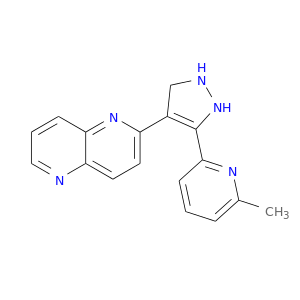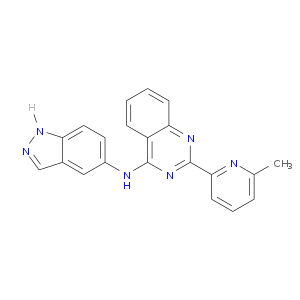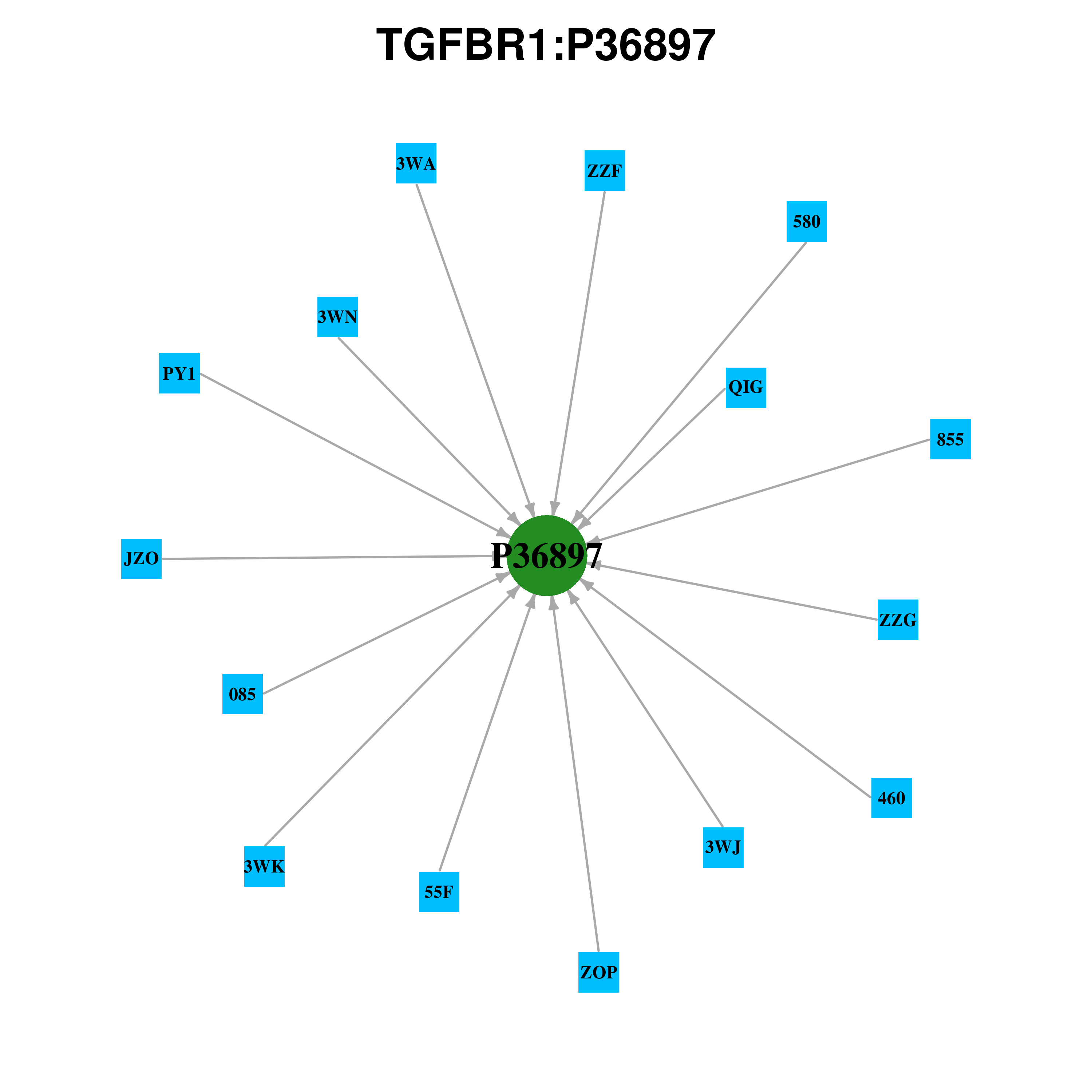|
mutLBSgeneDB |
| |
| |
| |
| |
| |
| |
|
| Gene summary for TGFBR1 |
 Gene summary Gene summary |
| Basic gene Info. | Gene symbol | TGFBR1 |
| Gene name | transforming growth factor, beta receptor 1 | |
| Synonyms | AAT5|ACVRLK4|ALK-5|ALK5|ESS1|LDS1|LDS1A|LDS2A|MSSE|SKR4|TGFR-1|tbetaR-I | |
| Cytomap | UCSC genome browser: 9q22 | |
| Type of gene | protein-coding | |
| RefGenes | NM_001130916.1, NM_004612.2, | |
| Description | TGF-beta receptor type-1activin A receptor type II-like kinase, 53kDaactivin A receptor type II-like protein kinase of 53kDactivin receptor-like kinase 5serine/threonine-protein kinase receptor R4transforming growth factor, beta receptor I (activin A | |
| Modification date | 20141222 | |
| dbXrefs | MIM : 190181 | |
| HGNC : HGNC | ||
| Ensembl : ENSG00000106799 | ||
| HPRD : 01822 | ||
| Vega : OTTHUMG00000020353 | ||
| Protein | UniProt: P36897 go to UniProt's Cross Reference DB Table | |
| Expression | CleanEX: HS_TGFBR1 | |
| BioGPS: 7046 | ||
| Pathway | NCI Pathway Interaction Database: TGFBR1 | |
| KEGG: TGFBR1 | ||
| REACTOME: TGFBR1 | ||
| Pathway Commons: TGFBR1 | ||
| Context | iHOP: TGFBR1 | |
| ligand binding site mutation search in PubMed: TGFBR1 | ||
| UCL Cancer Institute: TGFBR1 | ||
| Assigned class in mutLBSgeneDB | A: This gene has a literature evidence and it belongs to targetable_mutLBSgenes. | |
| References showing study about ligand binding site mutation for TGFBR1. | 1. "Leutermann R, Sheikhzadeh S, Brockstädt L, Rybczynski M, van Rahden V, Kutsche K, von Kodolitsch Y, Rosenberger G. A 1-bp duplication in TGFB2 in three family members with a syndromic form of thoracic aortic aneurysm. Eur J Hum Genet. 2014 Jul;22(7):944-8. doi: 10.1038/ejhg.2013.252. Epub 2013 Nov 6" 24193348 | |
 Gene ontology having evidence of Inferred from Direct Assay (IDA) from Entrez Gene ontology having evidence of Inferred from Direct Assay (IDA) from Entrez |
| GO ID | GO Term | PubMed ID | GO:0000186 | activation of MAPKK activity | 18625725 | GO:0001837 | epithelial to mesenchymal transition | 15761148 | GO:0006355 | regulation of transcription, DNA-templated | 14517293 | GO:0006468 | protein phosphorylation | 12015308 | GO:0007165 | signal transduction | 14633705 | GO:0007179 | transforming growth factor beta receptor signaling pathway | 11157754 | GO:0010862 | positive regulation of pathway-restricted SMAD protein phosphorylation | 9311995 | GO:0018105 | peptidyl-serine phosphorylation | 15761148 | GO:0018107 | peptidyl-threonine phosphorylation | 19736306 | GO:0030307 | positive regulation of cell growth | 18625725 | GO:0031396 | regulation of protein ubiquitination | 18758450 | GO:0045893 | positive regulation of transcription, DNA-templated | 9311995 | GO:0051897 | positive regulation of protein kinase B signaling | 18625725 | GO:0060389 | pathway-restricted SMAD protein phosphorylation | 11157754 | GO:0060391 | positive regulation of SMAD protein import into nucleus | 9389648 | GO:0070723 | response to cholesterol | 17878231 | GO:0071560 | cellular response to transforming growth factor beta stimulus | 19494318 | GO:2001235 | positive regulation of apoptotic signaling pathway | 18758450 |
| Top |
| Ligand binding site mutations for TGFBR1 |
 Cancer type specific mutLBS sorted by frequency Cancer type specific mutLBS sorted by frequency |
| LBS | AAchange of nsSNV | Cancer type | # samples | A230 | E228V | BRCA | 1 | H283 | H283R | COAD | 1 | A230 | A230V | COAD | 1 | V219 | V219F | COAD | 1 | R294 | T296I | LUAD | 1 | E245 | E245K | LUAD | 1 | Y249 | Q250E | LUAD | 1 | F216 | G217A | OV | 1 | S287 | S287F | STAD | 1 |
| cf) Cancer type abbreviation. BLCA: Bladder urothelial carcinoma, BRCA: Breast invasive carcinoma, CESC: Cervical squamous cell carcinoma and endocervical adenocarcinoma, COAD: Colon adenocarcinoma, GBM: Glioblastoma multiforme, LGG: Brain lower grade glioma, HNSC: Head and neck squamous cell carcinoma, KICH: Kidney chromophobe, KIRC: Kidney renal clear cell carcinoma, KIRP: Kidney renal papillary cell carcinoma, LAML: Acute myeloid leukemia, LUAD: Lung adenocarcinoma, LUSC: Lung squamous cell carcinoma, OV: Ovarian serous cystadenocarcinoma, PAAD: Pancreatic adenocarcinoma, PRAD: Prostate adenocarcinoma, SKCM: Skin cutaneous melanoma, STAD: Stomach adenocarcinoma, THCA: Thyroid carcinoma, UCEC: Uterine corpus endometrial carcinoma. |
| Top |
| Protein structure related information for TGFBR1 |
 Relative protein structure stability change (ΔΔE) using Mupro 1.1 Relative protein structure stability change (ΔΔE) using Mupro 1.1 Mupro score denotes assessment of the effect of mutations on thermodynamic stability. (ΔΔE<0: mutation decreases stability, ΔΔE>0: mutation increases stability) |
 : nsSNV at non-LBS : nsSNV at non-LBS : nsSNV at LBS : nsSNV at LBS |
 |
 nsSNVs sorted by the relative stability change of protein structure by each mutation nsSNVs sorted by the relative stability change of protein structure by each mutation Blue: mutations of positive stability change. and red : the most recurrent mutation for this gene. |
| LBS | AAchange of nsSNV | Relative stability change | R294 | T296I | -1.0134971 | S287 | S287F | -0.90843976 | V219 | V219F | -0.79619211 | A230 | A230V | -0.6499906 | F216 | G217A | -0.64869934 | A230 | E228V | -0.59676623 | Y249 | Q250E | -0.55713493 | E245 | E245K | -0.48810263 | H283 | H283R | -0.46619558 |
| (MuPro1.1: Jianlin Cheng et al., Prediction of Protein Stability Changes for Single-Site Mutations Using Support Vector Machines, PROTEINS: Structure, Function, and Bioinformatics. 2006, 62:1125-1132) |
 Structure image for TGFBR1 from PDB Structure image for TGFBR1 from PDB |
| Top |
| Differential gene expression and gene-gene network for TGFBR1 |
 Differential gene expression between mutated and non-mutated LBS samples in all 16 major cancer types Differential gene expression between mutated and non-mutated LBS samples in all 16 major cancer types |
 Differential co-expressed gene network based on protein-protein interaction data (CePIN) Differential co-expressed gene network based on protein-protein interaction data (CePIN) |
| Top |
| Top |
| Phenotype information for TGFBR1 |
 Gene level disease information (DisGeNet) Gene level disease information (DisGeNet) |
| Disease ID | Disease name | # PubMed | Association type |
| umls:C2697932 | Loeys-Dietz Syndrome | 26 | Biomarker, GeneticVariation |
| umls:C0009404 | Colorectal Neoplasms | 6 | AlteredExpression, Biomarker, GeneticVariation |
| umls:C0037286 | Skin Neoplasms | 4 | Biomarker |
| umls:C0546476 | Keratoacanthoma familial | 3 | Biomarker, GeneticVariation |
| umls:C0002949 | Aneurysm, Dissecting | 3 | Biomarker, GeneticVariation |
| umls:C0000786 | Abortion, Spontaneous | 1 | Biomarker |
| umls:C0041948 | Uremia | 1 | Biomarker |
 Mutation level pathogenic information (ClinVar annotation) Mutation level pathogenic information (ClinVar annotation) |
| Allele ID | AA change | Clinical significance | Origin | Phenotype IDs |
| 210169 | V219F | Uncertain significance | Germline | MedGen:CN169374 |
| 210181 | S287F | Uncertain significance | Germline | MedGen:CN169374 |
| Top |
| Pharmacological information for TGFBR1 |
 Gene expression profile of anticancer drug treated cell-lines (CCLE) Gene expression profile of anticancer drug treated cell-lines (CCLE)Heatmap showing the correlation between gene expression and drug response across all the cell-lines. We chose the top 20 among 138 drugs.We used Pearson's correlation coefficient. |
 |
 Gene-centered drug-gene interaction network Gene-centered drug-gene interaction network |
 |
 Drug information targeting mutLBSgene (Approved drugs only) Drug information targeting mutLBSgene (Approved drugs only) |
| Drug status | DrugBank ID | Name | Type | Drug structure |
| Experimental | DB03921 | 4-(3-Pyridin-2-Yl-1h-Pyrazol-4-Yl)Quinoline | Small molecule |  |
| Experimental | DB04434 | Naphthyridine Inhibitor | Small molecule |  |
| Experimental | DB04480 | 3-(4-Fluorophenyl)-2-(6-Methylpyridin-2-Yl)-5,6-Dihydro-4h-Pyrrolo[1,2-B]Pyrazole | Small molecule |  |
| Experimental | DB07152 | N-[4-(5-fluoro-6-methylpyridin-2-yl)-5-quinoxalin-6-yl-1H-imidazol-2-yl]acetamide | Small molecule |  |
| Experimental | DB07267 | 2-(6-methylpyridin-2-yl)-N-pyridin-4-ylquinazolin-4-amine | Small molecule |  |
| Experimental | DB08450 | N-1H-indazol-5-yl-2-(6-methylpyridin-2-yl)quinazolin-4-amine | Small molecule |  |
 Gene-centered ligand-gene interaction network Gene-centered ligand-gene interaction network |
 |
 Ligands binding to mutated ligand binding site of TGFBR1 go to BioLip Ligands binding to mutated ligand binding site of TGFBR1 go to BioLip |
| Ligand ID | Ligand short name | Ligand long name | PDB ID | PDB name | mutLBS | 55F | N-[4-(5-FLUORO-6-METHYLPYRIDIN-2-YL)-5-QUINOXALIN-6-YL-1H-IMIDAZOL-2-YL]ACETAMIDE | 3faa | A | A230 E245 Y249 H283 | JZO | 4-[3-(METHOXYMETHYL)PHENYL]-1,2-DIMETHYL-5-QUINOXALIN-6-YL-1,2-DIHYDRO-3H-PYRAZOL-3-ONE | 3kcf | B | A230 E245 Y249 H283 | JZO | 4-[3-(METHOXYMETHYL)PHENYL]-1,2-DIMETHYL-5-QUINOXALIN-6-YL-1,2-DIHYDRO-3H-PYRAZOL-3-ONE | 3kcf | D | A230 E245 Y249 H283 | JZO | 4-[3-(METHOXYMETHYL)PHENYL]-1,2-DIMETHYL-5-QUINOXALIN-6-YL-1,2-DIHYDRO-3H-PYRAZOL-3-ONE | 3kcf | E | A230 E245 Y249 H283 | 085 | SB431542 | 4-[5-(1,3-BENZODIOXOL-5-YL)-4-(PYRIDIN-2-YL)-1H- IMIDAZOL-2-YL]BENZAMIDE | 3tzm | A | A230 H283 | 3WJ | 4-AMINO-8-(4-AMINOPHENYL)PYRIDO[2,3-D]PYRIMIDIN-5(8H)- ONE | 4x2f | A | A230 H283 S287 | 460 | NAPHTHYRIDINE INHIBITOR | 1vjy | A | A230 Y249 H283 | 55F | N-[4-(5-FLUORO-6-METHYLPYRIDIN-2-YL)-5-QUINOXALIN-6-YL-1H-IMIDAZOL-2-YL]ACETAMIDE | 3faa | C | F216 V219 A230 Y249 H283 | ZOP | (3Z)-N-ETHYL-N-METHYL-2-OXO-3-(PHENYL{[4-(PIPERIDIN-1-YLMETHYL)PHENYL]AMINO}METHYLIDENE)-2,3-DIHYDRO-1H-INDOLE-6-CARBOXAMIDE | 2x7o | A | V219 A230 E245 H283 R294 | ZOP | (3Z)-N-ETHYL-N-METHYL-2-OXO-3-(PHENYL{[4-(PIPERIDIN-1-YLMETHYL)PHENYL]AMINO}METHYLIDENE)-2,3-DIHYDRO-1H-INDOLE-6-CARBOXAMIDE | 2x7o | B | V219 A230 E245 H283 R294 | ZOP | (3Z)-N-ETHYL-N-METHYL-2-OXO-3-(PHENYL{[4-(PIPERIDIN-1-YLMETHYL)PHENYL]AMINO}METHYLIDENE)-2,3-DIHYDRO-1H-INDOLE-6-CARBOXAMIDE | 2x7o | E | V219 A230 E245 H283 R294 | 55F | N-[4-(5-FLUORO-6-METHYLPYRIDIN-2-YL)-5-QUINOXALIN-6-YL-1H-IMIDAZOL-2-YL]ACETAMIDE | 3faa | B | V219 A230 E245 Y249 H283 | 55F | N-[4-(5-FLUORO-6-METHYLPYRIDIN-2-YL)-5-QUINOXALIN-6-YL-1H-IMIDAZOL-2-YL]ACETAMIDE | 3faa | D | V219 A230 E245 Y249 H283 | 55F | N-[4-(5-FLUORO-6-METHYLPYRIDIN-2-YL)-5-QUINOXALIN-6-YL-1H-IMIDAZOL-2-YL]ACETAMIDE | 3faa | E | V219 A230 E245 Y249 H283 | JZO | 4-[3-(METHOXYMETHYL)PHENYL]-1,2-DIMETHYL-5-QUINOXALIN-6-YL-1,2-DIHYDRO-3H-PYRAZOL-3-ONE | 3kcf | A | V219 A230 E245 Y249 H283 | 3WN | 4-[(3-AMINOPHENYL)AMINO]PYRIDO[2,3-D]PYRIMIDIN-5(8H)- ONE | 4x2j | A | V219 A230 E245 Y249 H283 | 3WO | 4-[(3-AMINOPHENYL)AMINO]PYRIDO[2,3-D]PYRIMIDIN-5(6H)- ONE | 4x2k | A | V219 A230 E245 Y249 H283 | ZOP | (3Z)-N-ETHYL-N-METHYL-2-OXO-3-(PHENYL{[4-(PIPERIDIN-1-YLMETHYL)PHENYL]AMINO}METHYLIDENE)-2,3-DIHYDRO-1H-INDOLE-6-CARBOXAMIDE | 2x7o | C | V219 A230 E245 Y249 H283 R294 | ZOP | (3Z)-N-ETHYL-N-METHYL-2-OXO-3-(PHENYL{[4-(PIPERIDIN-1-YLMETHYL)PHENYL]AMINO}METHYLIDENE)-2,3-DIHYDRO-1H-INDOLE-6-CARBOXAMIDE | 2x7o | D | V219 A230 E245 Y249 H283 R294 | PY1 | 4-(3-PYRIDIN-2-YL-1H-PYRAZOL-4-YL)QUINOLINE | 1py5 | A | V219 A230 H283 | ZZG | 4-PYRIDINOXY-2-ANILINOPYRIDINE-BASED COMPOUND | 2wot | A | V219 A230 H283 | ZZF | 4-PYRIDINOXY-2-ANILINOPYRIDINE-BASED COMPOUND | 2wou | A | V219 A230 H283 | 3WA | 4-AMINOPYRIDO[2,3-D]PYRIMIDIN-5(8H)-ONE | 4x0m | A | V219 A230 H283 | 3WK | 4-[(4-AMINOPHENYL)AMINO]PYRIDO[2,3-D]PYRIMIDIN-5(6H)- ONE | 4x2g | A | V219 A230 H283 S287 | 580 | 3-(4-FLUOROPHENYL)-2-(6-METHYLPYRIDIN-2-YL)-5,6-DIHYDRO-4H-PYRROLO[1,2-B]PYRAZOLE | 1rw8 | A | V219 A230 Y249 H283 | JZO | 4-[3-(METHOXYMETHYL)PHENYL]-1,2-DIMETHYL-5-QUINOXALIN-6-YL-1,2-DIHYDRO-3H-PYRAZOL-3-ONE | 3kcf | C | V219 A230 Y249 H283 |
| Top |
| Conservation information for LBS of TGFBR1 |
 Multiple alignments for P36897 in multiple species Multiple alignments for P36897 in multiple species |
| LBS | AA sequence | # species | Species | A230 | RGEEVAVKIFS | 3 | Homo sapiens, Bos taurus, Mus musculus | A350 | GTCCIADLGLA | 3 | Homo sapiens, Bos taurus, Mus musculus | D281 | LWLVSDYHEHG | 3 | Homo sapiens, Bos taurus, Mus musculus | D290 | HGSLFDYLNRY | 3 | Homo sapiens, Bos taurus, Mus musculus | D351 | TCCIADLGLAV | 3 | Homo sapiens, Bos taurus, Mus musculus | E245 | RSWFREAEIYQ | 3 | Homo sapiens, Bos taurus, Mus musculus | E284 | VSDYHEHGSLF | 3 | Homo sapiens, Bos taurus, Mus musculus | F216 | IGKGRFGEVWR | 3 | Homo sapiens, Bos taurus, Mus musculus | F262 | ENILGFIAADN | 3 | Homo sapiens, Bos taurus, Mus musculus | G212 | LQESIGKGRFG | 3 | Homo sapiens, Bos taurus, Mus musculus | G214 | ESIGKGRFGEV | 3 | Homo sapiens, Bos taurus, Mus musculus | G286 | DYHEHGSLFDY | 3 | Homo sapiens, Bos taurus, Mus musculus | H283 | LVSDYHEHGSL | 3 | Homo sapiens, Bos taurus, Mus musculus | H285 | SDYHEHGSLFD | 3 | Homo sapiens, Bos taurus, Mus musculus | I211 | VLQESIGKGRF | 3 | Homo sapiens, Bos taurus, Mus musculus | K213 | QESIGKGRFGE | 3 | Homo sapiens, Bos taurus, Mus musculus | K232 | EEVAVKIFSSR | 3 | Homo sapiens, Bos taurus, Mus musculus | K335 | AHRDLKSKNIL | 3 | Homo sapiens, Bos taurus, Mus musculus | K337 | RDLKSKNILVK | 3 | Homo sapiens, Bos taurus, Mus musculus | L260 | RHENILGFIAA | 3 | Homo sapiens, Bos taurus, Mus musculus | L278 | WTQLWLVSDYH | 3 | Homo sapiens, Bos taurus, Mus musculus | L340 | KSKNILVKKNG | 3 | Homo sapiens, Bos taurus, Mus musculus | N338 | DLKSKNILVKK | 3 | Homo sapiens, Bos taurus, Mus musculus | R294 | FDYLNRYTVTV | 3 | Homo sapiens, Bos taurus, Mus musculus | S280 | QLWLVSDYHEH | 3 | Homo sapiens, Bos taurus, Mus musculus | S287 | YHEHGSLFDYL | 3 | Homo sapiens, Bos taurus, Mus musculus | V219 | GRFGEVWRGKW | 3 | Homo sapiens, Bos taurus, Mus musculus | V231 | GEEVAVKIFSS | 3 | Homo sapiens, Bos taurus, Mus musculus | V279 | TQLWLVSDYHE | 3 | Homo sapiens, Bos taurus, Mus musculus | Y249 | REAEIYQTVML | 3 | Homo sapiens, Bos taurus, Mus musculus | Y282 | WLVSDYHEHGS | 3 | Homo sapiens, Bos taurus, Mus musculus |
 |
Copyright © 2016-Present - The University of Texas Health Science Center at Houston |
